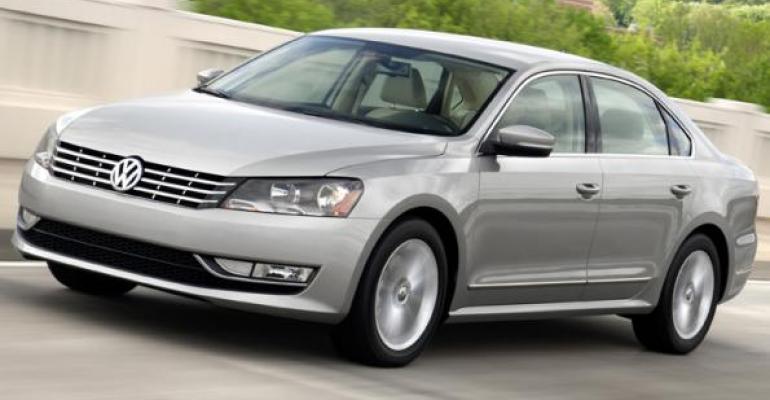PARIS – Engineers at glass supplier Saint-Gobain Sekurit develop layers of material to put in glass sandwiches that make windshields lighter, quieter and ice-free in less than two minutes.
A layer of polyvinylbutyral commonly is used between the inner and outer pane of windshield glass to prevent shattering in an accident. Auto makers over the years have added antennas, heating wires and sunscreens to that inner layer.
SGS says acoustical improvements to the PVB layer allow it to make thinner windshields without an increase in cabin noise, and a denser layer of silver flakes in some windshields reduces the air-conditioning load in summer and allows complete window defrosting in less than two minutes in winter.
In the past, most windshields were sandwiches of glass 0.08 ins. (2.1 mm) thick on each side of the PVB layer. Most auto makers now use 0.84 in./0.06 in. (1.6 mm) sandwiches that save 3.3 lbs. (1.5 kg). The next generation, due out in 2013, will be a sandwich of 0.07 ins./0.06 ins. (1.8 mm/1.4 mm), saving another 3.3 lbs (1.5 kg).
The PVB layer has been re-engineered to reduce noise entering the cabin by 3 to 5 decibels, spokeswoman Ann-Katrin Gluesing says.
Thinner glass made with a PVB layer to combat acoustic problems also is possible on sidelights and backlights.
Sekurit’s latest innovation is ClimaCoat, a layer of silver flakes inside the glass that reflect sunlight and conduct electricity for de-icing.
ClimaCoat builds on earlier technology. Previous silver-flake layers reflected less light; the new version is twice as reflective. In tests, the dashboard under a coated windshield is 18° F (10º C) cooler.
Electric defrosting using a silver-flake layer previously was available in the Volkswagen Phaeton and the Audi A8, which used a 42V electric circuit. Now the system, used in the Volkswagen Passat, uses the standard 14V circuit to produce a 400-watt charge. The reduction in price will enable the system to penetrate the D and C segments, Gluesing says.
In addition, says Volkmar Offermann, marketing director-Saint-Gobain Sekurit, ClimaCoat windshields can enhance the cruising range of electric vehicles.
“On the one hand, it is the most efficient solution to de-mist the windshield, and on the other hand, in summer the heating up of the cabin is reduced, so that the air conditioner runs less,” he says. “Hence, we see a good chance that ClimaCoat will be a standard for e-cars.”
Another advantage of silver flakes is that they are invisible, keeping the windshield transparent. Ford has used heated windshields with small wires .0001 in. (30 microns) in diameter embedded in the glass sandwich that defrost but remain visible to those who focus on them.
Defrosting systems for back windows generally use a slightly visible printed circuit.
The ClimaCoat is offered as two different options on the Passat, so that customers in hot climates can order it without the de-icing element. SGS estimates the lower cabin temperature lessens the load on the air-conditioning system, reducing carbon-dioxide emissions by 2.5 g/km.





